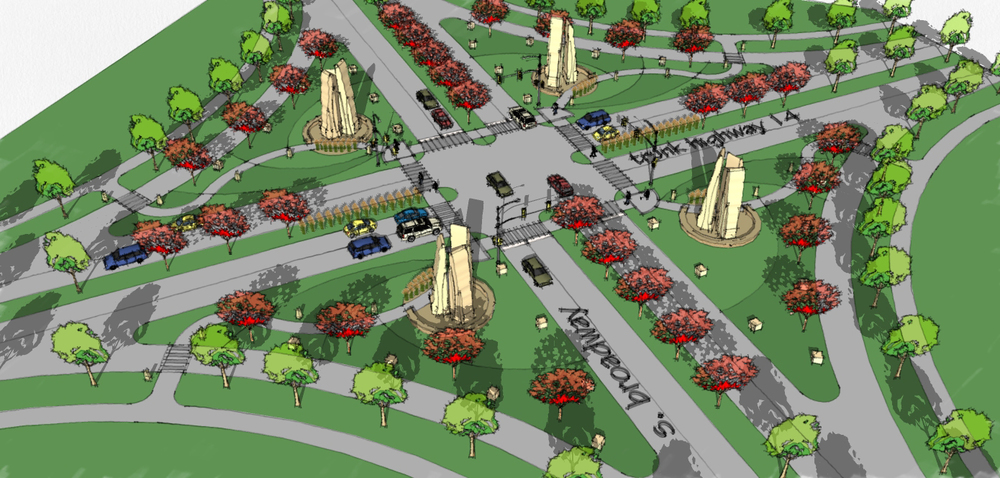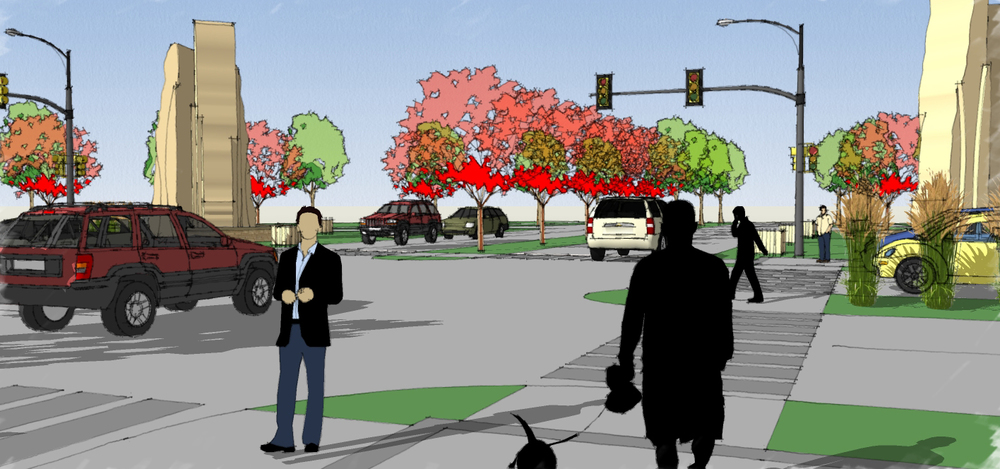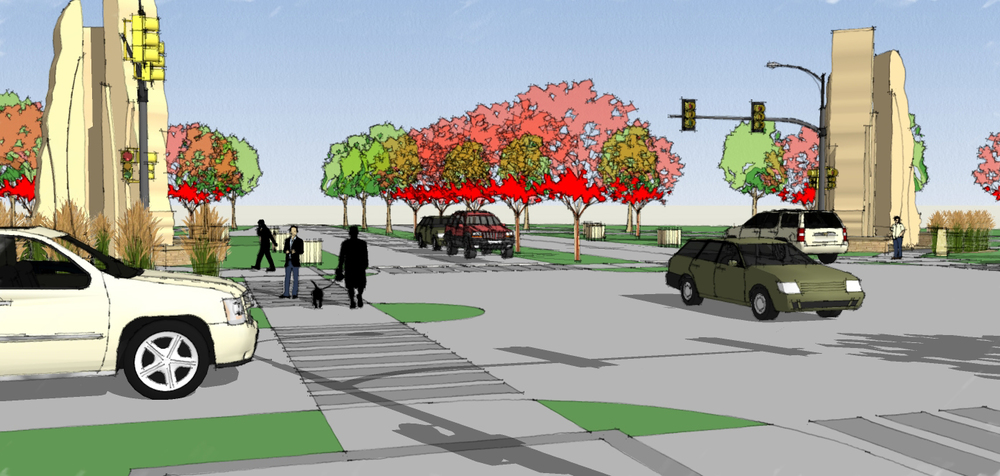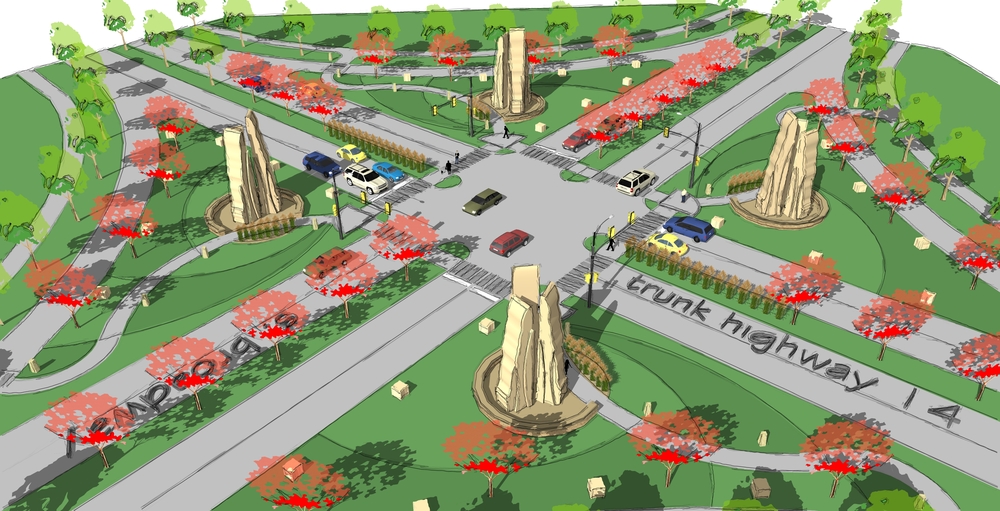Chances are by now you have driven through the "new and improved" intersection at Highway 14 and US 63 (Broadway). From the bicycle lanes travelling east-west on Hwy 14 to the landscaped berms highlighting the four corners, the design is just a little off. I guess it is what you would expect from a largely DOT-designed intersection at the confluence of two highways, but Rochester's downtown is done a disservice by this banal, vehicular dominated crossroads.

Even the Post-Bulletin Answer Man noticed things were a tad askew when he responded to a reader's question this week. What Mr. Man didn't highlight was the overall narrative of this design and what is says about how we prefer our intersections to look. In that way, he did not see the forest for the yarrow.
A potential alternative design possibility for this intersection is one that brings disparate modalities back into balance. Because as anyone who has tried to cross this intersection can attest, the pedestrian is completely negated in favor of the automobile. This seems odd considering a downtown neighborhood (Slatterly Park) is directly adjacent and Soldiers Field with it's connection to the vast bicycle trail network runs alongside the opposite corner. Taking into account a commercial hub on the third corner and a public school on the fourth and you have literally disjoined people from business and education.
Craig Ruhland--landscape architect, urban designer and former Rochester resident--has another approach. His design tries to bring things into balance where pedestrians can cross at a more manageable scale, bikes are incorporated, and public art and green space are used less to block sight lines and more to calm traffic. It highlights the lack of these elements in the current design and over-dependence on accommodating the car first.
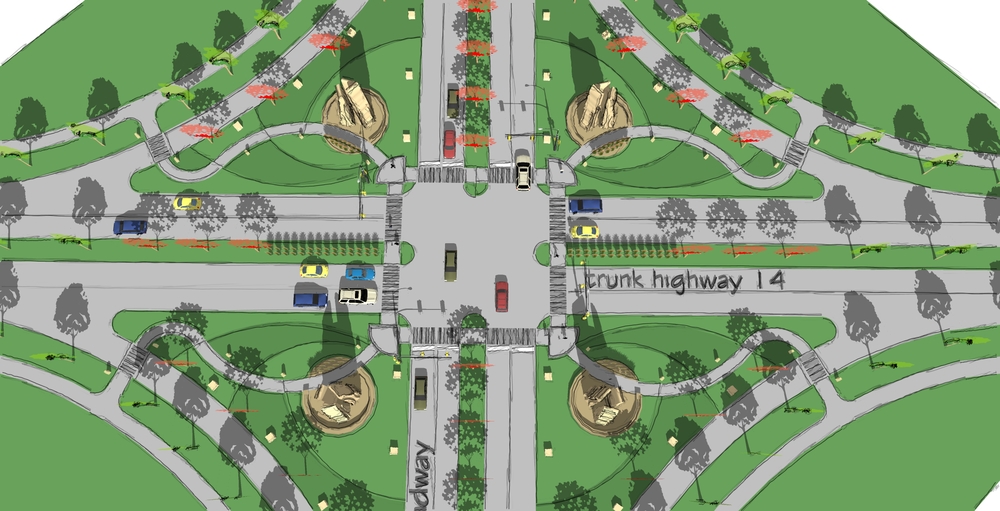
As with most compromised designs, the better alternative isn't as far from reality as you would think. Next time, better collaboration between DOT, Public Works, Public Health, BPAC, Neighborhood organizations, and community leaders can ensure that better balance is achieved in our street and intersection design.
For now, Craig's images evoke an environment that is more pedestrian-friendly, pedestrian-scale, and ultimately pro-pedestrian. Maybe this is in reaction to the pro-vehicle reality today or maybe it is wishful thinking of someone who has often wondered about crossing the road. Either way, it is a glimpse at an alternate future. And on the verge of US 63 changing ownership from the State to the City, perhaps more intersections will be redesigned and this may help to kick-start those conversations.
Thanks Craig!
